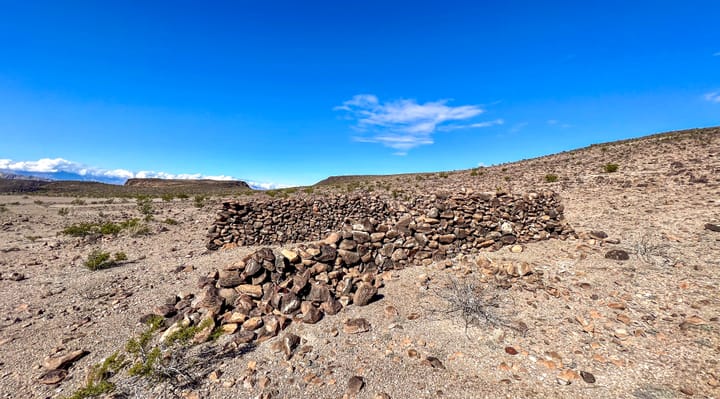In 2013, I joined a Searles Valley Historical Society field trip to see the well-preserved borax mining camp of Ryan in Death Valley. Having never been in the mining camp before, I jumped at the chance to visit.

Francis Marion Smith founded the Pacific Coast Borax Company in 1890. He bought out William Tell Coleman’s borate deposits around Death Valley and the region, including the Harmony Borax Works, and consolidated them into Pacific Coast Borax. Borax had become famous under Coleman for the 20 mule teams which he used to transport it from Furnace Creek to Mojave and Daggett in the 1880s. Smith continued to use the mule teams occasionally but, by August 1907, he had replaced them with his Tonopah and Tidewater Railroad. The 20 Mule Team name, however, was kept and heavily marketed.
In 1914 with other borate deposits becoming exhausted, Pacific Coast Borax turned its attention to its Hillside claims, these would soon become the six mines at Ryan. The Death Valley Railroad (a 36 inch narrow gauge line) was built from Death Valley Junction to Ryan and three mines; the Played Out, Upper Biddy McCarthy and Lower Biddy McCarthy, began producing and shipping borate ores. The other trio of Ryan mines; the Grand View, Lizzie V. Oakley, and Widow were slightly farther south. A 24 inch Baby Gauge railway line was built to connect these mines to the Upper Biddy and, by 1918, the Baby Gauge had reached all the way to the Widow, a distance of about three miles. The next ten years were the heyday of the mining camp.




